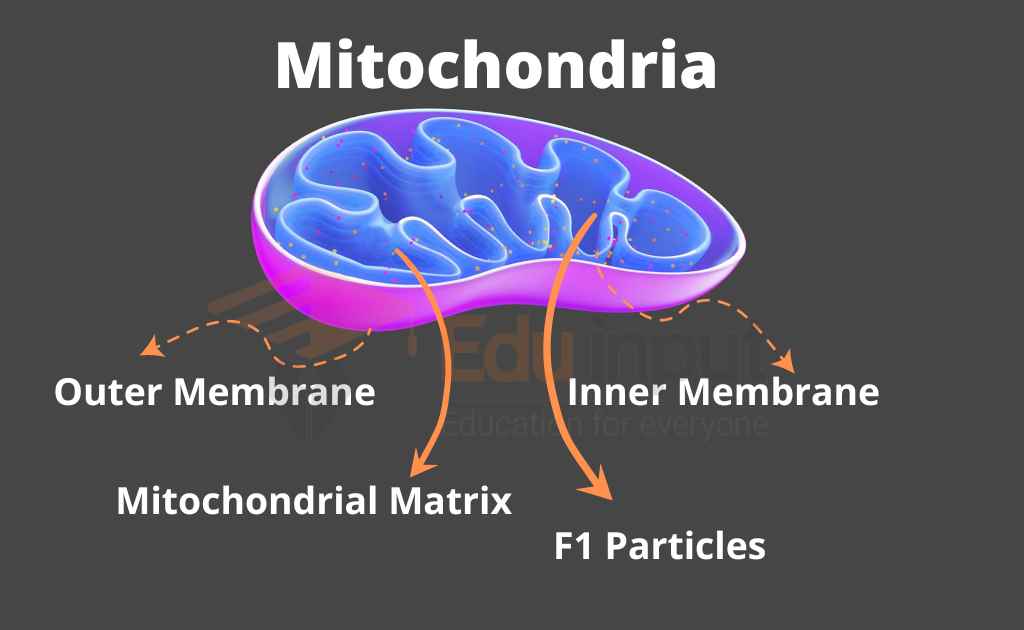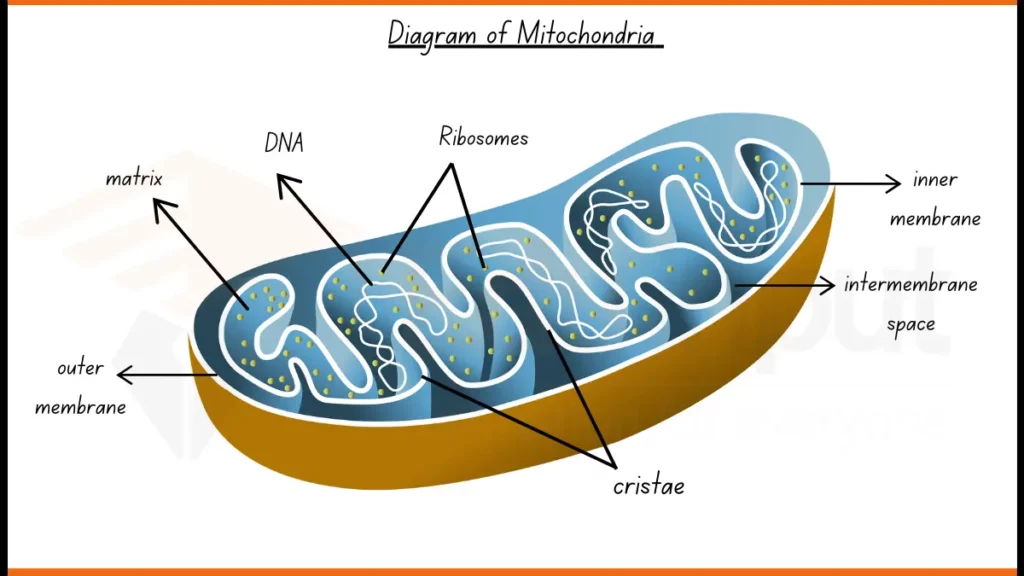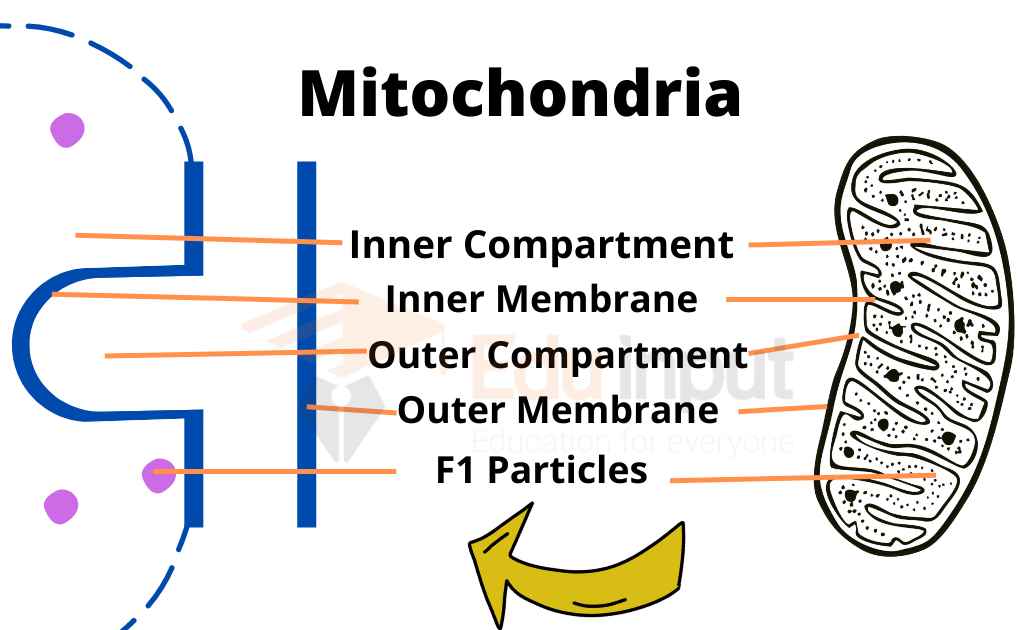Mitochondria- Discovery, Structure, Enzymes and Functions
What is Mitochondria/Mitochondrion?
Mitochondria are membrane bound organelles found in the cells of animals, plants, and fungi. They are often called the “powerhouses” of the cell. Their main function is to produce adenosine triphosphate (ATP). ATP is a molecule that provides energy for many cellular processes. Mitochondria generate this chemical energy.
They are present in the Cytoplasm. Mitochondria and Chloroplasts are the organelles that contain their DNA other than the DNA present in the nucleus.

Mitochondria fuels various cellular processes through the breakdown of glucose by a series of reactions.
The number of mitochondria differs from cell to cell. For example, in humans, red blood cells do not contain any mitochondria, whereas liver cells and muscle cells may contain hundreds or even thousands of mitochondria as they need a continuous supply of energy.
Mitochondria Diagram

Discovery of Mitochondria
Mitochondria were named by Carl Benda in 1898 from his study of cell internal structure and the first recorded information on mitochondria in plant cells was created by Friedrich Meves in 1904.
The reason, why it is believed that mitochondria originated from bacteria is that despite everything, they contain a little amount of DNA which resembles bacterial DNA. Mitochondrial DNA is around 16,000 bases in length and has 37 genes in individuals.
Structure of Mitochondria
Mitochondria are rod-shaped. Their diameter is about 0.5μm. They have a variable length of up to 7μm. There are 1000 to 1800 mitochondria in liver cells. The mitochondria contain two membranes. These membranes are separated. The membranes consist of unit membrane structures. The structural units of the unit membrane are lipid and protein molecules.

Here are the main components of Mitochondria:
Mitochondrial Membranes
Mitochondria have two membranes. The outer membrane surrounds the entire organelle. The inner membrane folds inward. These folds are called cristae. The space between the two membranes is called the intermembrane space.
Outer permeable membrane surrounds the entire organelle and controls the entry and exit of molecules. It contains proteins called porins that form channels, allowing passage of small molecules and ions.
Intermembrane Space between both membranes has a similar composition to the cytosol (fluid inside the cell) containing ions and small molecules.
Inner Membrane is selectively permeable. It acts as the powerhouse of the mitochondria. It folds inward to create numerous cristae. These foldings significantly increase its surface area for chemical reactions.
Mitochondrial Matrix
The innermost area is called the matrix. The matrix contains enzymes and molecules like glucose, fatty acids, and pyruvate. These substances are used to produce ATP. These enzymes are responsible for the citric acid cycle and the breakdown of pyruvate to generate ATP.
Cristae
The cristae increase the inner membrane’s surface area. This is important for the process of making ATP. This expanded area provides more space for the proteins involved in ATP production via oxidative phosphorylation.
Mitochondrial crest
The mitochondrial matrix contains complex infolding. These infoldings are called mitochondrial crests or cristae. The mitochondrial crests are incomplete septa or ridges.
F1 particles
The inner membrane of the mitochondria contains numerous small particles. These are called elementary or F, particles. Their diameter is 8.5nm. They are regularly spaced at intervals of 10nm on the inner surface of the inner membrane. These particles contain a special ATPase complex and proton pump. This complex is involved in coupling oxidation and phosphorylation.
Enzymes of Mitochondria
Following enzymes are present in Mitochondria:
Enzymes in Outer Membrane:
- Monoamine oxidase
- NADH-Cytochrome reductase
- Fatty acid CoA Ligase
Enzymes in Space between outer and inner membrane:
- Adenylate kinase
- Nucleoside diphosphokinase.
Enzymes in Inner membrane:
- Respiratory chain enzyme
- ATP synthase,
Enzymes in Matrix:
- Malate dehydrogenase
- Citrate synthetase
- a-keto acid dehydrogenase
Functions of mitochondria
Here are the main functions of Mitochondria:
- Generate ATP (cellular energy) through oxidative phosphorylation.
- Conduct cellular respiration to break down fuel for energy.
- Run the citric acid cycle to extract energy from carbohydrates and fats.
- Oxidize pyruvate and fatty acids to fuel the citric acid cycle.
- Utilize the electron transport chain to transfer electrons for energy production.
- Establish a proton gradient across the inner membrane for ATP synthesis.
- Carry out oxidative phosphorylation to make ATP using the proton gradient.
- Regulate cellular metabolism based on energy needs.
- Initiate programmed cell death (apoptosis) under specific conditions.
- Maintain calcium signaling within the cell.
Frequently Asked Questions-FAQs
What is the main function of mitochondria?
Its primary function is to produce ATP by oxidative phosphorylation. It is also involved in the regulation of metabolic activities of the cell.
Why do the liver and muscles have the highest number of mitochondria?
Liver cells and muscle cells contain hundreds of mitochondria as they need a continuous supply of energy for their proper functioning.
Do RBCs have mitochondria?
Unlike others, Mammalian’s mature Red blood cells lack two organelles, Nucleus and Mitochondria.
Does Mitochondria contain DNA?
Yes, Mitochondria and chloroplasts are the organelles that contain their DNA, except the DNA of the cell.
Why is mitochondria so important?
Mitochondria is important as it is the powerhouse of the cell. It synthesizes ATP through oxidative phosphorylation.
Where is the mitochondria located?
The mitochondria are found within the cytoplasm of most eukaryotic cells. They can be found scattered throughout the cytoplasm, but they are often concentrated in areas with high energy demands, such as muscle cells and nerve cells.
what simple sugar is broken down in the mitochondria?
Glucose is the simple sugar that is broken down in the mitochondria.







Leave a Reply